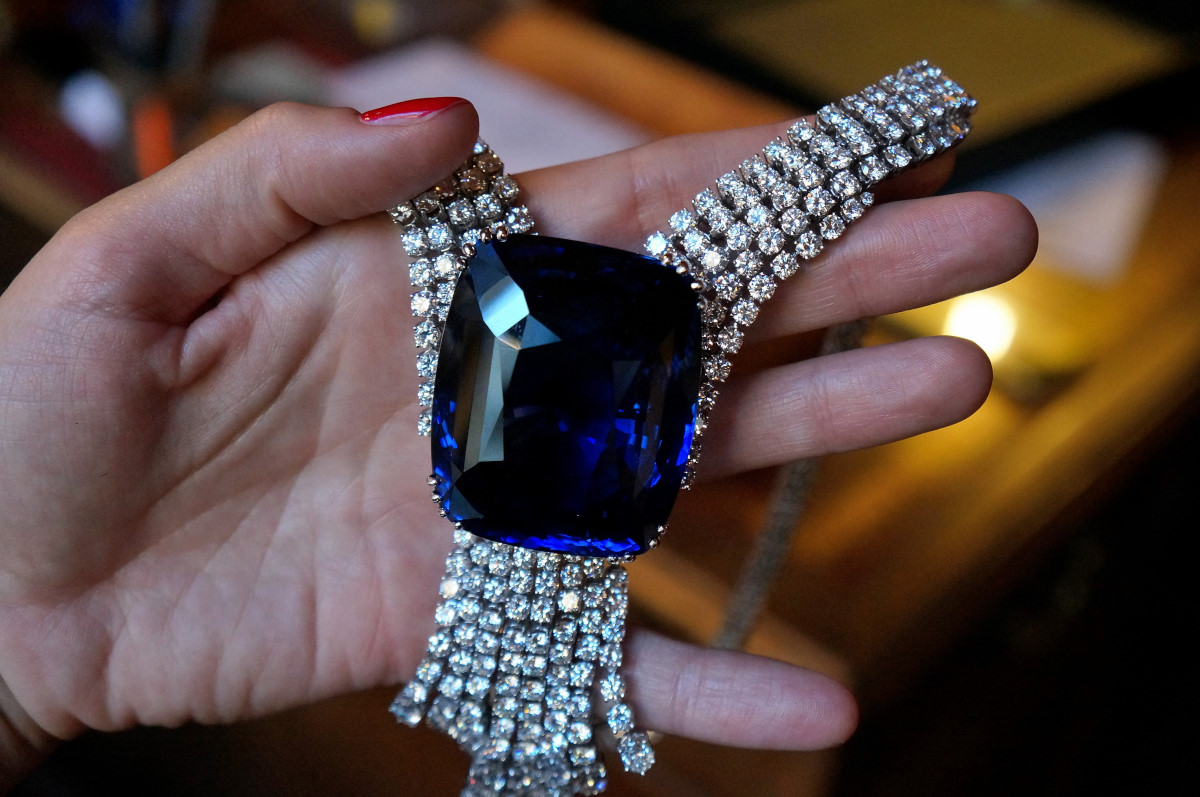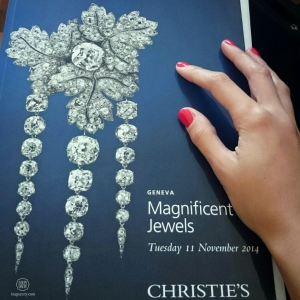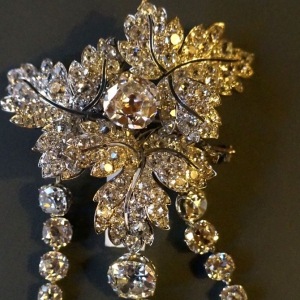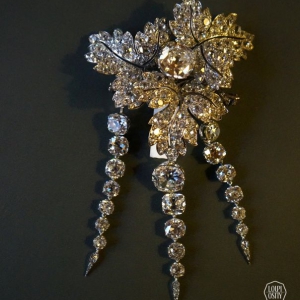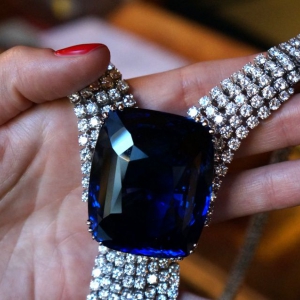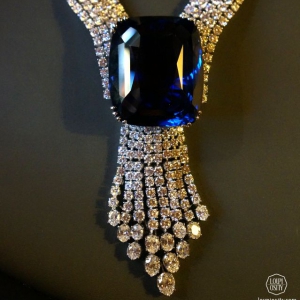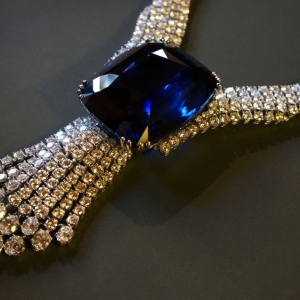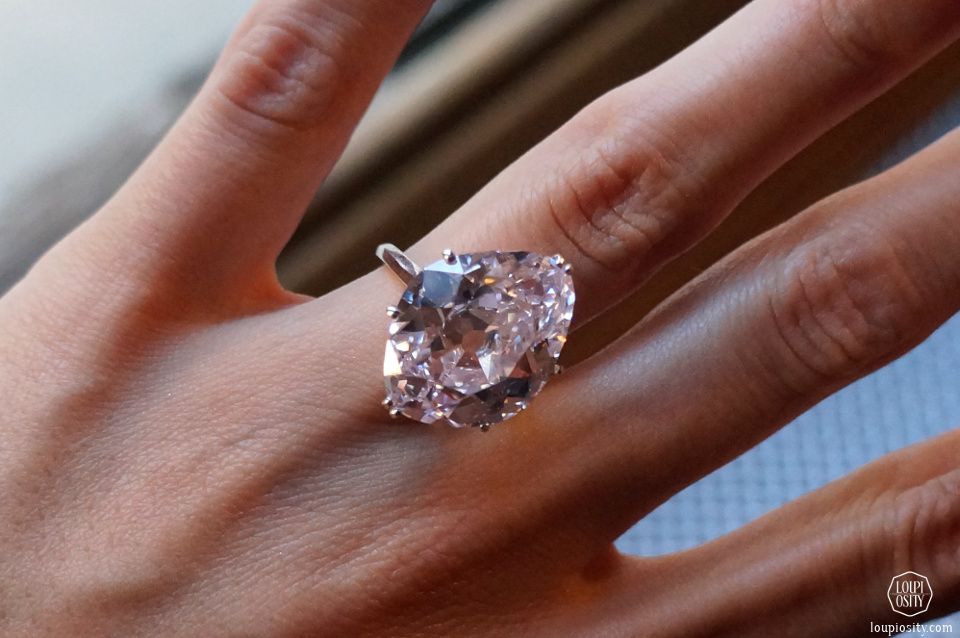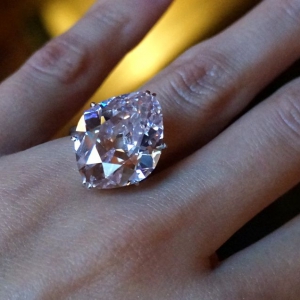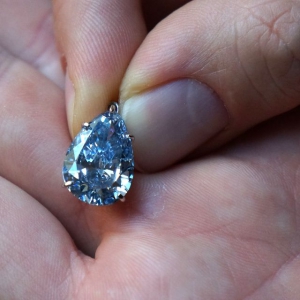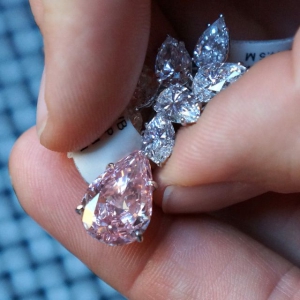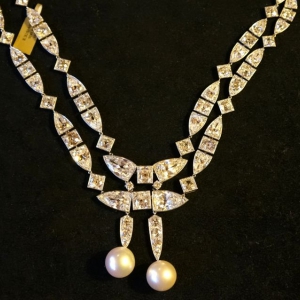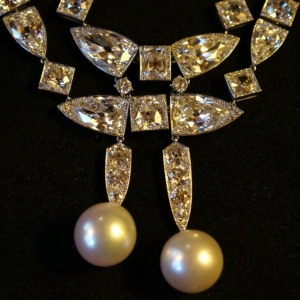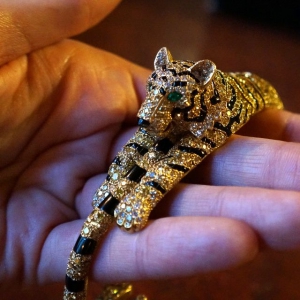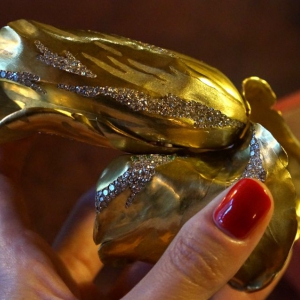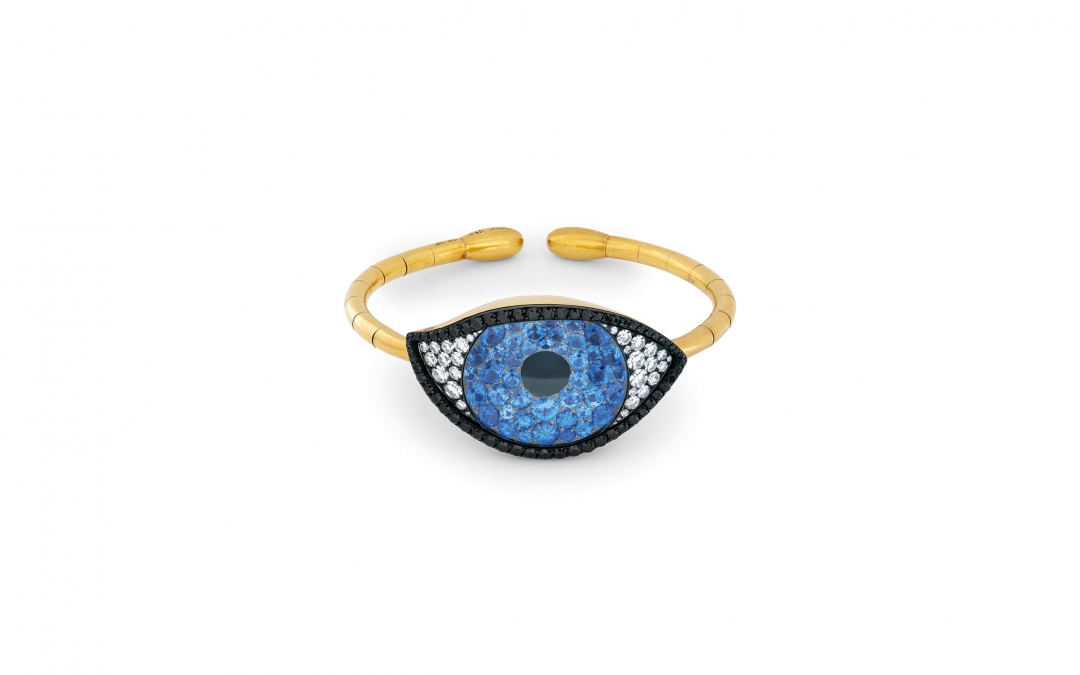A few weeks ago I was one of the HRD alumni in Antwerp, listening to Daniel Struyf’s captivating stories with a bated breath. He does what many just dream of – as a jewellery specialist at Christie’s, Daniel works with some of the most stunning jewels in the world.
The entire audience was hanging on his words for two reasons. Firstly, the story of each piece encapsulates that of the miners, craftsmen, kings and queens, silent owners, thieves and everyone who had ever connected directly or indirectly with it. In arts it is referred to as “provenance” – the historical ownership and other associations of the piece that gives its’ contextual and chronological origin. This makes jewels thick story books, whose tales require curious and practiced eyes to read as well as a zealous mind to pass on, which Daniel certainly has.
Secondly, the jewels he talked about had what he referred to as chemistry or X-factor, a hardly explainable hypnotic radiation on top of the usual properties like material, period, signature, provenance, design/construction, work and condition.
Christie’s Geneva Magnificent Jewels
11 November will be the day when some of the most remarkable jewels embedding human destinies, history, artistic excellence and the supernatural X-factor will change owners in Geneva at the Christie’s Magnificent Jewels auction. I was honoured to visit Daniel at his office in Geneva and preview the highlights of the show.
Empress Eugenie brooch
Pieces with great historical legacy, the highlighted pieces of aristocracy, artists and royalty are frequent and important participants of auctions. The brooch on the cover of the catalogue is such a jewel (value estimation: CHF1,900,000 – CHF2,900,000). Originally a Spanish noblewoman, Empress Eugenie became the last Empress of France as the wife of French Emperor Napoleon III. Their marriage was a union of love, Eugenie was an educated and extremely intelligent woman, and her husband often sought her opinion in important matters. In addition she had outstanding taste, and was considered a prominent figure in the fashion of the time. Eugenie’s refined taste was not only evident in her attire but in her jewellery collection too. The brooch featured in the auction was originally part of the magnificent “Parure de feuilles de groseillier”. (It was commissioned to Bapst Jewellers, Court Goldsmiths.) The guirlande was part of the set, worn as a necklace; a tour-de-corsage, worn directly on the dress and a devant-de-corsage brooch. The devant-de-corsage (or stomacher) was a type of jewellery originally designed to cover the front of the bodice. Later as fashion changed, stomachers were divided into smaller brooches. The tour-de-corsage was dedicated to be worn on the dress, around the waist or hips. This amazing garland was divided into several pieces, such as the brooch on the auction. It was acquired by Tiffany & Co. in 1936, and was presented to Madame Lucrezia Bori, the Spanish lyric soprano of the Metropolitan Opera. The cushion-shaped-mine diamond in the centre of the brooch is framed by three, 3-branch diamond leaves, 3 detachable tassels hang off each leaf, that are mounted in silver and gold.
Blue Belle of Asia
Nowadays exceptional quality colourful gemstones and colour diamonds are also outstanding auction lots. The Blue Belle of Asia was discovered in 1926 at Pelmadula, Ratnapura (‘The City of Gems’ – this location contains the most gem deposits and derived its name from the gem industry) in Ceylon. For long centuries, the island of Sri Lanka has been a key source for sapphires. These sapphires are known for their high clarity, special colour, and fingerprint inclusions. Almost 10 years later the Blue Belle of Asia was sold to a British automotive magnate, the founder of Morris Motors Ltd., Lord Nuffield (1877-1963). After this only rumours surround the fate of the stone. The 392.52 Carat, unheated sapphire, framed with brilliant-cut diamonds is a truly stunning sight even for the untrained eye, both for its size and colour.
Fancy colour diamonds
Being fancy about fancy diamond colours, this 15.62 ct Fancy Pink diamond, with VS1 clarity impressed me pretty much, especially after trying it on…
The stone is a Type IIa diamond, these have no measurable nitrogen impurities. Type IIa diamonds make up 1–2% of all natural diamonds. These diamonds usually have very good clarity and many of them are colourless or have a nice yellow, orange, pink, red, or blue colour. Type IIa diamonds constitute a great percentage of the Australian production. Many large and famous diamonds, e.g. Cullinan and Koh-i-Noor, are Type IIa.
Continuing with colour diamonds: Bulgari’s unique earrings have a true “X-factor”. On one pair, a detachable pear-shaped fancy vivid blue diamond (6.95 ct, Type IIb, SI2 clarity), dangles on the marquise and pear-shaped diamond leaves, a pear-shaped fancy vivid pink diamond (6.79 ct, Type IIa, VS2) dangles on the other pair.
Natural pearl and diamond necklace and Cartier “Tiger” bracelet
One of my personal highlights was certainly trying on an Art Deco natural pearl and diamond necklace. It was previously in the collection of Baroness Edouard de Rothschild. Good to know that we have at least one thing in common, our neck size is similar; the necklace is very light, and comfortable to wear.
A matching pair of natural pearls of this size (approx. 16.0 x 15.9 mm) and quality is very rare. What’s more, as the SSEF Swiss Gemmological Institute stated, these pearls are natural saltwater pearls.
Even the not-too-hardcore jewellery fans can recognise a Cartier piece with a big cat motif. In 1933 the Director of High Jewellery at Cartier was Jeanne Toussaint. She joined Cartier in 1910 and albeit she was not the first to use it – she is credited for the introduction of the characteristic motif. Her colleagues even gave her the Panther nickname. The named piece was part of the collection of Wallis Simpson, the Duchess of Windsor (1896-1986).
This bracelet and brooch are entirely pavé-set with brilliant-cut yellow and colourless diamonds, onyx stripes; the tiger’s head is set with onyx nose and marquise-shaped emerald eyes.
Joel Arthur Rosenthal jewellery
Finally, but not least, I had the chance to see some JAR pieces. Joel Arthur Rosenthal is a controversial person and so is his jewellery. He graduated from Harvard as an Art Historian, then worked in the film industry, and went on to work for Bulgari in New York. He opened his first store in Paris at Place Vendôme in 1977. He works with his partner, Pierre Jeannet, to create interesting and one-of-a-kind jewellery. He had a retrospective exhibition at the Metropolitan Museum of Art earlier this year. You can like him or not, but he is certainly a unique jeweller of our time. As Vanessa Friedman described he has an “extraordinary approach to his work, which can be summed up as creating what he wants, when he wants, for who he wants.”
I held the gold sculpted parrot tulip bangle with diamonds and green garnets and it is a statement piece; you should have not only the occasion but a pretty definite style to wear it.
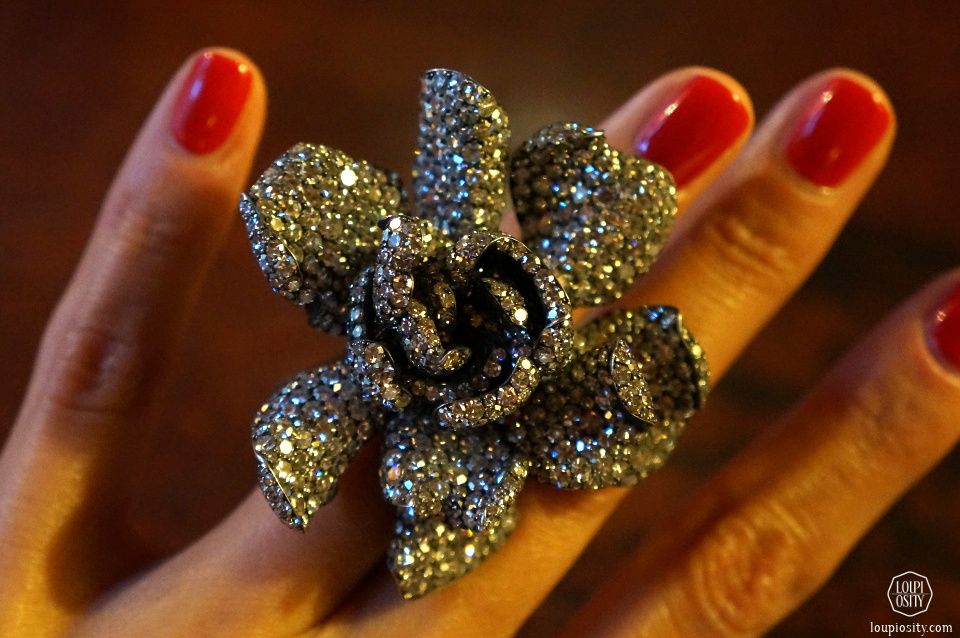
|
JAR Gardenia ring, entirely pavé-set with brilliant-cut diamonds, with French assay marks for silver and gold
|
Upcoming Fine Watch and Jewellery auctions in Geneva
The auction house, established by James Christie in 1778 has traced, evaluated and traded some of the most significant artworks including high jewellery and fine watches since its’ foundation. The Genovese autumn usually witnesses a great deal of auctions and this year is no different – The Magnificent Jewels is preceded by two major watch auctions, the highly anticipated 175 Patek Philippe (9 November) and the Important Watches (10 November).
Will you be there?
Photo credits: Christie’s, Loupiosity.com.
All registered trademarks are property of their respective owners.
All rights reserved.
